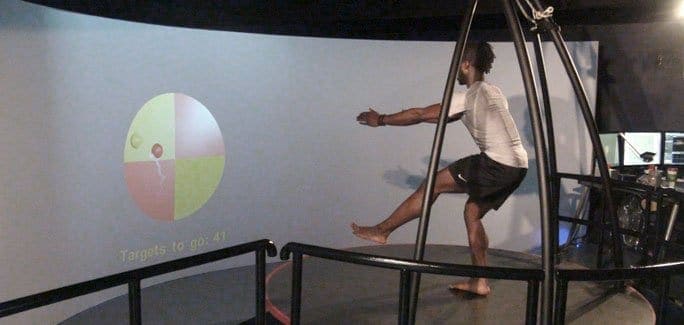Knee pain is a common complaint of adults, especially as we age. One reason the knee joint is vulnerable to pain is that it is a complex structure that bears our body weight, and regulates forward, backward and lateral (side) movement. Many structures of the lower body come together at the knee, including the tibia and fibula of the lower leg, and the femur of the upper leg. The bones are held in place by a complex network of muscles, tendons and ligaments. Because so many structures are involved in knee alignment, it is easy for things to get out of balance.
Think of your skeleton as the rigid posts of a tent. By themselves, they are helpless to keep the tent in place. But when you ad the stakes and straps, or lines, that provide tension, the tent stands erect. Now consider if someone tripped over one of the straps and uprooted the tent stake. The tent would sag, or maybe even collapse.
Your muscles, tendons and ligaments act very much like the tent straps, pulling against the rigid structures of your knee to hold it in place. As long as muscle tension is optimal, your knee is held in perfect alignment and functions smoothly, without pain. But when you become injured, or when muscle tension becomes imbalanced from overuse, underuse, or poor flexibility, your knee becomes unstable, causing it to function improperly, and leading to knee pain.
To complicate matters, your knees do not act alone; they are a link in your kinetic chain that coordinates with other joints to position your body alignment. Injuries or misalignment of the ankles, hips and spine can force your knees out of alignment, leading to knee pain. When your knees hurt, you may subconsciously try to alleviate pain by compensating. For example, if you have pain in your right knee, you will likely shift your body weight to your left leg, overloading the structures on that side of your body. Not only will you make those structures work overtime, but you will also throw your spine, hips, ankles and knees out of alignment.
Over time, compensation becomes a postural habit that is difficult to correct. The muscles surrounding the painful knee become weak from underuse, while the muscles used to compensate can become overdeveloped and tight. You can imagine that so much imbalance can lead to further injury and knee pain in the compensating joint.
Now imagine if you could identify exactly which structures and areas in your body were out of balance, and you could be guided through exercises that specifically target those areas to restore optimal tension and perfect alignment. At New York Dynamic Neuromuscular Rehabilitation and Physical Therapy, or NYDNR, you will find the best knee pain specialists in New York City. NYDNR uses a unique high tech system called Computer Assisted Rehabilitative Environment, or C.A.R.E.N to retrain your muscles and eliminate knee pain. C.A.R.E.N is a fully immersive environment that uses principals of virtual reality and feedback training to restore functional walking and weight bearing activity. The sophisticated technology of C.A.R.E.N eliminates human error, and accurately identifies problem areas. It then coaches you in ways that retrain your muscles to restore balance and optimal joint alignment.























































